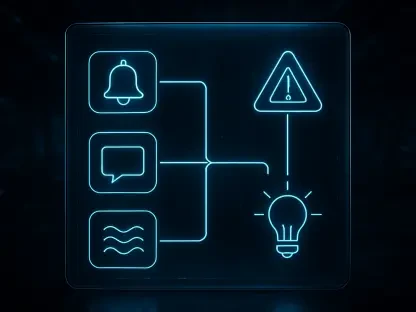In a groundbreaking move that has sent ripples through the tech industry, Elon Musk’s xAI has officially open-sourced Grok 2.5, marking a significant step in the race for AI supremacy, while underscoring the company’s commitment to transparency and collaboration. This decision positions xAI at the forefront of innovation amidst fierce global competition. While the release of Grok 2.5 has garnered widespread attention, it comes with its share of challenges and critiques from the tech community regarding implementation and licensing. Moreover, Musk has publicly acknowledged the growing rivalry with Chinese companies, labeling them as the most formidable competitors in the AI landscape. This development raises questions about how open-sourcing advanced models like Grok 2.5 will impact xAI’s standing in an increasingly crowded field. As the industry watches closely, the implications of this move could redefine the balance of power in AI research and development, setting the stage for a deeper exploration of its technical aspects and strategic motivations.
1. Technical Details of Grok 2.5’s Open-Source Release
The release of Grok 2.5 by xAI comes with a hefty set of technical requirements that highlight the model’s complexity and power. Available for download on a popular machine learning platform, the model comprises 42 files totaling approximately 500GB, a substantial footprint that reflects its sophisticated architecture. xAI recommends running Grok 2.5 using SGLang, a specialized inference engine, with detailed steps provided for downloading weight files and starting the server. However, potential users must be prepared for occasional download errors, requiring persistence to complete the process successfully. Notably, the model demands significant hardware resources, specifically eight GPUs with over 40GB of video memory each, to operate effectively. This high barrier to entry may limit accessibility for smaller developers or organizations lacking such infrastructure, raising questions about the practical inclusivity of this open-source initiative in the broader AI community.
Beyond the logistical challenges, the performance metrics of Grok 2.5 offer a glimpse into its capabilities compared to other leading models. While not yet at the pinnacle of current state-of-the-art systems, the Grok 2 series has shown promising results in various academic benchmarks, including postgraduate-level scientific knowledge and complex math problems. Last year’s technical blogs from xAI revealed that earlier iterations achieved impressive standings on industry leaderboards, surpassing some well-known competitors in overall scores. However, the lack of transparency regarding specific parameter weights for Grok 2.5 has sparked speculation among enthusiasts, with estimates suggesting it could be a Mixture of Experts (MoE) model with around 269 billion parameters. This ambiguity, coupled with the resource-intensive setup, suggests that while the open-source release is a step toward democratization, it may still cater primarily to well-equipped entities rather than the wider public, prompting discussions on the true intent behind this strategic move.
2. Community Reactions and Licensing Concerns
The open-sourcing of Grok 2.5 has elicited a mixed response from the tech community, with both praise and criticism surfacing in equal measure. Many applaud Elon Musk for taking this bold step, viewing it as a positive contribution to the AI field that could foster innovation through shared knowledge. The phrase “better late than never” has been echoed by netizens, acknowledging that while the release missed Musk’s initially promised timeline, its arrival is still a welcome development. Yet, beneath the surface of this enthusiasm lies a layer of skepticism about the model’s accessibility due to its demanding hardware requirements. The sentiment that only those with significant resources can utilize Grok 2.5 has led to debates over whether this move genuinely promotes inclusivity or merely serves as a symbolic gesture to garner goodwill among developers and researchers in the AI ecosystem.
On the flip side, licensing issues have emerged as a significant point of contention surrounding Grok 2.5’s release. Unlike other major players in the industry who adopt permissive licenses like MIT or Apache 2.0 for their models, xAI’s approach appears to lean toward a non-commercial framework, as interpreted by online commentators. This restrictive licensing has drawn criticism for potentially limiting the model’s use in commercial applications, thereby reducing its appeal to businesses and startups looking to integrate advanced AI solutions. Furthermore, the absence of clear documentation on parameter specifics has frustrated users who seek deeper insights into the model’s structure. These concerns collectively paint a picture of an open-source release that, while ambitious, may fall short of meeting the community’s expectations for transparency and usability, highlighting a critical area for xAI to address in future updates or releases.
3. Competitive Landscape and Strategic Implications
As xAI navigates the complexities of open-sourcing Grok 2.5, the broader competitive landscape in AI development cannot be overlooked, especially with Chinese companies emerging as key rivals. Elon Musk has openly stated that while xAI aims to outpace other global tech giants, the most significant challenge lies in keeping up with advancements from China. This acknowledgment points to the rapid progress and investment in AI technologies within that region, where companies are aggressively pushing boundaries in model development and deployment. The strategic decision to open-source Grok 2.5 may be seen as an attempt to build a collaborative network of developers worldwide, potentially countering the concentrated innovation hubs in competing markets by fostering a more distributed knowledge base.
Delving deeper into this rivalry, the open-sourcing of Grok 2.5 could serve as a double-edged sword for xAI in maintaining a competitive edge. By making the model publicly available, xAI not only gains visibility and credibility but also risks exposing proprietary techniques that rivals could adapt or improve upon. This move might accelerate innovation across the board, but it also intensifies the pressure on xAI to stay ahead with subsequent releases, such as the anticipated Grok 3, slated for open-sourcing within the next six months. Additionally, the focus on new features like AI video generation in the Grok app update signals xAI’s intent to diversify its offerings, potentially carving out niche advantages in user engagement. As the AI race heats up, xAI’s ability to balance openness with strategic innovation will be crucial in determining whether it can hold its ground against formidable international competitors.
4. Looking Ahead: Navigating Future Challenges
Reflecting on the rollout of Grok 2.5, it is evident that xAI took a significant leap by embracing an open-source model, despite the hurdles encountered in execution and reception. The mixed feedback from the community underscores a pivotal moment where the balance between accessibility and technical demands was tested. Licensing ambiguities and hardware barriers presented notable obstacles that shaped the initial impact of this release, while the competitive undertones with Chinese counterparts added a layer of urgency to xAI’s broader mission. This chapter in xAI’s journey reveals both the potential and the pitfalls of democratizing advanced AI, setting a precedent for how such initiatives are perceived in a rapidly evolving tech landscape.
Moving forward, xAI faces the task of refining its open-source strategy to address the critiques that surfaced during Grok 2.5’s debut. Enhancing transparency around model specifications and reconsidering licensing terms could bridge gaps with the developer community, ensuring broader adoption. Simultaneously, investing in scalable solutions to lower hardware requirements might democratize access further. As the rivalry with global players intensifies, xAI needs to prioritize rapid iteration and innovation, particularly with upcoming releases like Grok 3. Collaborating with smaller entities and fostering an inclusive ecosystem could also strengthen its position against competitors. These steps, if executed thoughtfully, promise to solidify xAI’s role as a leader in AI development, turning challenges into opportunities for growth.









